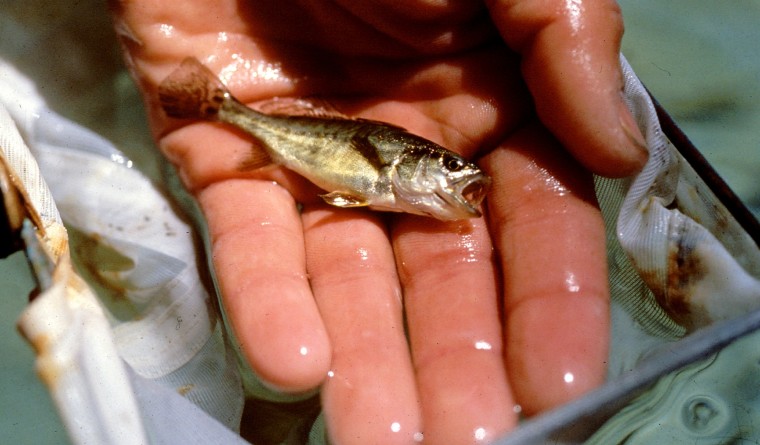Listen up! Carbon dioxide being absorbed by the oceans is having a puzzling effect on fish — their ears get bigger.
Now, that doesn't mean you're going to reel in the Mr. Spock of the sea. Fish ears are inside their bodies.
But, as in humans, their ears perform a major role in sensing movement and whether the animal is upright — abilities that are important for survival.
"It was a surprise," biological oceanographer David M. Checkley of the Scripps Institution of Oceanography at the University of California at San Diego said of the discovery. "The assumption is that anything that departs significantly from normality is an abnormality, and abnormalities at least have the potential for having deleterious effects."
The ear structure in fish is known as an otolith and is made up of minerals. Checkley and colleagues knew that increasing carbon dioxide in the oceans — absorbed from the atmosphere — is making the sea more acidic, which can dissolve and weaken shells. They wondered if it also would reduce the size of the otoliths.
Just the opposite, it turned out, the researchers report in Friday's edition of the journal Science.
In their experiment they incubated the eggs of white sea bass in seawater and measured the otoliths when the fish were 7 to 8 days old.
In the first test, the water had more than six times the current amount of carbon dioxide, and the little fish grew otoliths 15 percent to 17 percent larger than normal. The researchers were so surprised they repeated the experiment, and got the same results.
So they reduced the carbon dioxide in the water to about 3.5 times the current level — a concentration that could occur by the year 2100 at the rate CO2 is being added to the atmosphere and then the sea. Those fish had ear bones 7 percent to 9 percent larger than fish raised in seawater with current gas concentrations.
"An important observation is that the effect of CO2 in atmosphere, and therefore in the ocean, includes not only (global) warming and making the ocean more acidic. There are other effects on the biology and ecology that merit study," Checkley said in a telephone interview.
The new finding, surprising in itself, raises further questions Checkley said need to be explored.
Researchers now will try to figure out how the added carbon dioxide in the water causes the ear bones to enlarge, whether this is happening to other types of fish, and whether the long-term effect will be good or bad.
"If fish can do just fine or better with larger otoliths, then there's no great concern. But fish have evolved to have their bodies the way they are. The assumption is that if you tweak them in a certain way it's going to change the dynamics of how the otolith helps the fish stay upright, navigate and survive," Checkley said.
There are anecdotal observations that fish in higher concentrations of CO2 seem to be lethargic, he added, but that needs confirmation.
More on climate change | fish evolution
